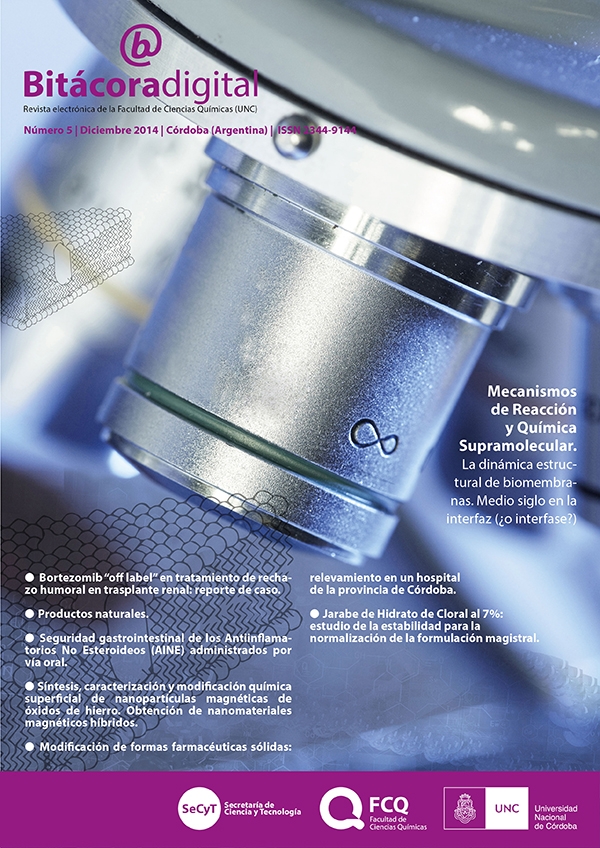La dinámica estructural de biomembranas. Medio siglo en la interfaz (¿o interfase?)...
Abstract
Las membranas celulares contienen una grandiversidad de lípidos y proteínas. Estas estructuraspresentan un polimorfismo dinámico constituyendouno de los estados más complejos de la materia locual determina reacciones bioquímicas y, porconsiguiente, todas las funciones celulares. Cuandose combinan la estructura e interacciones de lasmoléculas de lípidos y proteínas auto-organizadases inevitable la emergencia de tensionesviscoelásticas, de curvatura y diversas restriccionestermodinámicas y estructurales que ello impone alsistema. A su vez, las tensiones desarrolladas enescala supramolecular condicionan y regulan lasinteracciones, reacciones enzimáticas, y laposibilidad de recombinación de membranas(fusión, fisión) en una compleja sinergiamultivariable y multidireccional. Para describir yentender las estructuras y la dinámica demembranas biológicas se requieren elementos detopología y termodinámica de interfacescombinados, construidos sobre la base deresultados aportados por la biofísica molecular delípidos y proteínas en meso-estructuraspolimórficas. Aún mezclas relativamente simples deglicerofosfolípidos, esfingolípidos y esteroles conproteínas integrales y anfitrópicas tienen capacidadde transmitir y transducir información molecular ytopológica que influencian el comportamiento debiomembranas
Cell membranes contain a large diversity of lipidsand proteins. They show a dynamic polymorphismand can be considered as one of the more complexstates of matter that underlay biochemical reactionsthus being the basis of all cellular functions. At thelocal level, the chemical structure and interactionsamong components influence the molecular shapeand determine the overall structure, surfacetopography, enzymatic reactions and the possibilityfor membrane recombination (membrane fusionand fission). When these effects are taken intoaccount the emergence of self-organized structuresbearing viscoelastic and curvature tensions, withtheconsequent thermodynamic and structuraltransductions, becomes inevitable. Conversely, thetensions developed at the supramolecular scaledetermine and condition the local molecularinteractions in a complex multivariable synergy. Inorder to describe and understand the structuraldynamics of biomembranes it is necessary to rely onelements of topology and surface thermodynamicsderived from studies on the molecular biophysics oflipids and proteins in mesomorphic systems. Evensimple systems of glycero-and sphingo-lipids,strerols and amphitropic proteins are capable oftransducing molecular and topological informationat the membrane level
Downloads
Issue
Section
License
Licencia Creative Commons BY NC
Usted es libre de:
- Compartir — copiar y redistribuir el material en cualquier medio o formato
- Adaptar — remezclar, transformar y construir a partir del material
- La licenciante no puede revocar estas libertades en tanto usted siga los términos de la licencia
Bajo los siguientes términos:
-
Atribución — Usted debe dar crédito de manera adecuada, brindar un enlace a la licencia, e indicar si se han realizado cambios. Puede hacerlo en cualquier forma razonable, pero no de forma tal que sugiera que usted o su uso tienen el apoyo de la licenciante.
-
NoComercial — Usted no puede hacer uso del material con propósitos comerciales.

